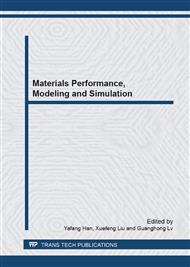p.504
p.510
p.518
p.528
p.535
p.540
p.545
p.551
p.556
Computational Modeling of Sand Cementation by Bio-Mineral CaCO3
Abstract:
An innovative sand cementation method of bio-mineral carbonate formation in sand spacing through urea hydrolysis inspired by microbial urease was introduced in the present investigation. A sand column prepared for experimental data and a set of engineering equations for 1-D numerical modeling data of the sand cementation process were adopted. Important characteristic of CaCO3 weight vertically along the sand column and the urea concentration variation under the effect of microbial urease was investigated based on the experiment and the modeling. Future study was suggested to focus on the models parameters modification in order to construct an applicable model for industrial up-scaling application in sand or soil strengthening.
Info:
Periodical:
Pages:
535-539
Citation:
Online since:
March 2013
Authors:
Price:
Сopyright:
© 2013 Trans Tech Publications Ltd. All Rights Reserved
Share:
Citation:


